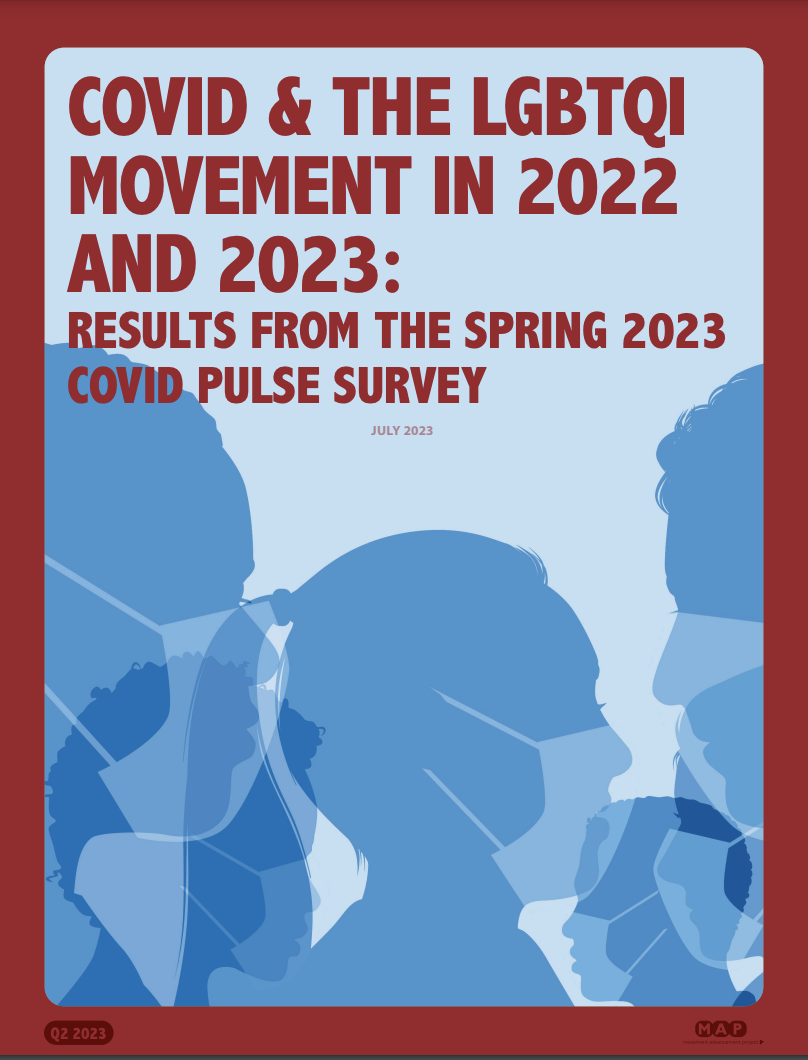Since the start of the pandemic, MAP has published a series of reports with data from LGBTQI organizations about their operations, finances, and programs. Reports released in
September 2020,
January 2021,
June 2021,
September 2021,
December 2021, and
April 2022 demonstrate the flexibility and continued resilience of LGBTQI and allied organizations.
>> To view all of MAP's resources related to COVID-19, visit our policy issue page.
COVID & the LGBTQI Movement in 2022 and 2023: Results from the Spring 2023 COVID Pulse Survey (July 2023)Download Report Report Figures and Infographics (July 2023)Download COVID & the LGBTQI Movement in 2021: Results from the Q4 2021 COVID Pulse Survey (April 2022)Download Report COVID & the LGBTQI Movement in 2021: Results from the Q3 2021 COVID Pulse Survey (December 2021)Download Report COVID & the LGBTQI Movement in 2021: Results from the Q2 2021 COVID Pulse Survey (September 2021)Download Report COVID & the LGBTQI Movement in 2021: Results from the Q1 2021 COVID Pulse Survey (June 2021)Download Report Related Report: Looking Ahead to 2021: The Impact of COVID-19 on the LGBTQI Movement (January 2021)Download Report Related Report: Understanding the Impact of COVID-19 on the LGBTQI Movement (September 2020)Download Report MAP Issue Page: COVID-19Visit
The latest entry in MAP's COVID Pulse Survey series, released in July 2023, provides the findings from the March-April 2023 Pulse Survey, in which organizations shared their experiences in 2022 and their current activities and plans for 2023. The report builds on 17 years of MAP research about the health and needs of the movement, illuminating valuable insights to LGBTQI organizations, funders, and individual donors.
The findings in the July 2023 report indicate that movement organizations are largely recovering from the effects of COVID, with many of the participants reporting that their experiences raising revenue and budgeting for expenses met their expectations last year, though there were exceptions. Another positive indicator is the large proportion of organizations reporting that they are operating at a higher capacity than before the pandemic. Almost all participants are focusing on hiring more staff, and most organizations have also adapted to working remotely, or with a hybrid of in-office and remote work. As the pandemic appears to wane, movement organizations have opportunity for stabilization and growth.
Recommended citation: Movement Advancement Project. July 2023.
COVID & the LGBTQI Movement in 2022 and 2023: Results from the Spring 2023 COVID Pulse Survey.
www.mapresearch.org/2023-pulse-survey-report. Accessed [date of access].


